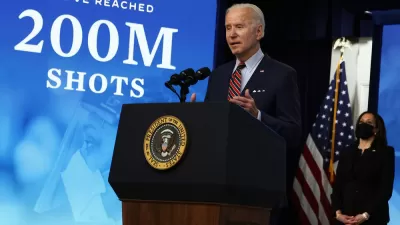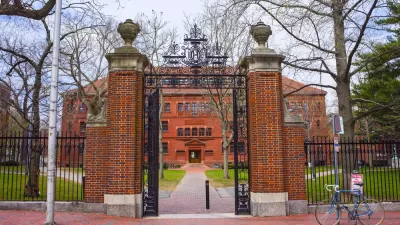When the Kumbh Mela, a 48-day Hindu festival held every four years, starts this week in northern India it will be the largest gathering in history. Researchers are using the opportunity to study the formation and inner-workings of a pop-up mega city.
When between 30 million and 60 million ascetics and pilgrims gather on the flood plain of the Yamuna and Ganges rivers to observe the specially significant Purna ("complete") Kumbh (observed every 12 years), "a thriving 'city' complete with hospitals, sanitation systems, markets and police," will grow in an area "about the size of Madrid’s famous Casa de Campo park."
"The Kumbh has always operated in this capacity," writes Logan Plaster, "but for a variety of reasons, the 2013 festival represents a significant shift towards seeing the festival as a seminal academic learning environment."
"Harvard’s South Asia Institute, a group that connects all the schools at Harvard for the sake of inter-disciplinary regional projects, sees this as an unprecedented opportunity. The Institute has coordinated 35 students and faculty from four distinct schools to travel to the festival and study everything from water quality to sanitation techniques to health clinic readiness."
Researchers from the four schools will observe a wide range of socio-spatial elements of the gathering, from "how prices within the many Kumbh markets get determined" to "how anonymized cell phone data can assist in infectious disease mapping."
"The hope is that by studying a pop-up mega-city, researchers would learn lessons applicable to a wide range of mass gathering events, from refugee camps to music festivals like Burning Man," notes Plaster. "How do people move en masse? How can the spread of disease be kept in check using minimal technology? The questions aren’t new, but by bringing four major disciplines under one tent—literally—Harvard is creating a new strain of dialogue, one which just might be able to keep up with the crush of the crowd."
FULL STORY: What We Can Learn From the Largest Gathering in Human History

Alabama: Trump Terminates Settlements for Black Communities Harmed By Raw Sewage
Trump deemed the landmark civil rights agreement “illegal DEI and environmental justice policy.”

Planetizen Federal Action Tracker
A weekly monitor of how Trump’s orders and actions are impacting planners and planning in America.

How Atlanta Built 7,000 Housing Units in 3 Years
The city’s comprehensive, neighborhood-focused housing strategy focuses on identifying properties and land that can be repurposed for housing and encouraging development in underserved neighborhoods.

In Both Crashes and Crime, Public Transportation is Far Safer than Driving
Contrary to popular assumptions, public transportation has far lower crash and crime rates than automobile travel. For safer communities, improve and encourage transit travel.

Report: Zoning Reforms Should Complement Nashville’s Ambitious Transit Plan
Without reform, restrictive zoning codes will limit the impact of the city’s planned transit expansion and could exclude some of the residents who depend on transit the most.

Judge Orders Release of Frozen IRA, IIJA Funding
The decision is a victory for environmental groups who charged that freezing funds for critical infrastructure and disaster response programs caused “real and irreparable harm” to communities.
Urban Design for Planners 1: Software Tools
This six-course series explores essential urban design concepts using open source software and equips planners with the tools they need to participate fully in the urban design process.
Planning for Universal Design
Learn the tools for implementing Universal Design in planning regulations.
Jessamine County Fiscal Court
Caltrans
Institute for Housing and Urban Development Studies (IHS)
City of Grandview
Harvard GSD Executive Education
Toledo-Lucas County Plan Commissions
Salt Lake City
NYU Wagner Graduate School of Public Service





























